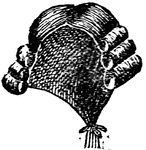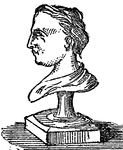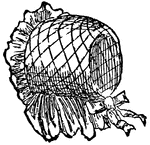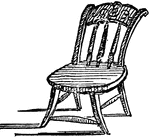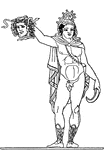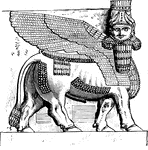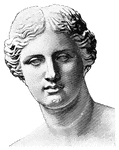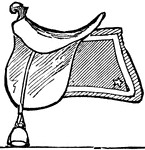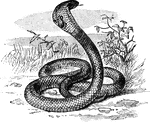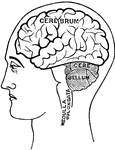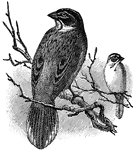
Lark Finch
A North American bird having a long graduated, party colored tail, and the head much striped.
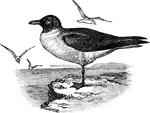
Hooded Gull
A small to medium sized gull, which when an adult, have their head enveloped in a dark or blackish hood…
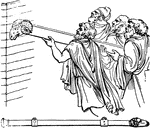
Battering Ram
"The battering ram was a large beam, made of the trunk of a tree, and having a mass of bronze or iron…
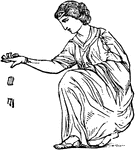
Talus
"Talus. The huckle-bones of sheep and goats were used to play with from the earliest times, principally…
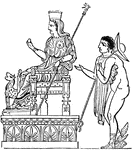
Thrones
"The following wood-cut from a fictile vase in the Museo Borbonico at Naples, represents Juno seated…
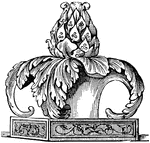
Thyrsus
"Thyrsus, a pole carried by Bacchus, and by Satyrs, Maenades, and others who engaged in Bacchic festivities…
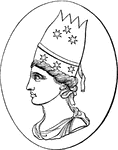
Tiara
"Tiara or Tiaras, a hat with a large high crown. This was the head-dress which characterized the north-western…

Head of a thyrsus
"Shows the head of a thyrsus composed of the leaves and berries of the ivy, and surrounded by acanthus…
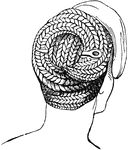
Platted hair
"The mode of platting the hair, and then fastening it with a pin on a needle, is shown in the annexed…
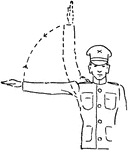
Squads Right, March
"Raise the arm laterally until horizontal; carry it to a vertical position above the head and swing…

Squad Right About, March
"Extend the arm vertically above the head; carry it laterally downward to the side and swing it several…
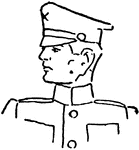
Eyes right
At the command right, turn the head to the right oblique, eyes fixed on the line of eyes of the men…
Inspection Arms
"At the second command take the position of arms. Seize the bolt handle with the thumb and forefinger…
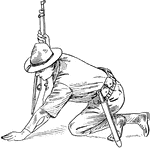
Lie Down
"Carry back the left foot and lie flat on the belly, inclining the body about 35 degree to the right."…

Lie Down
"Carry back the left foot and lie flat on the belly, inclining the body about 35 degree to the right."…
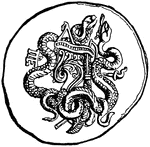
Cistophorus
The back of a Greek silver coin weighing on the average around 193 grains, first issued by the kings…
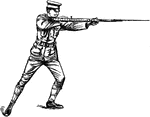
Bayonet Thrust
"The force of the thrust is delivered principally with the right arm, the left being used to direct…

Click Beetle
A type of beetle that when placed on it back, will spring up in the air onto its feet, producing a clicking…

Butt Strike
"Straighten right arm and right leg vigorously and swing butt of rifle against point of attack, pivoting…

High Parry
"Raise the rifle with both hands high enough to clear the line of vision, barrel downward, point of…

Low Parry
"Carry the point of the bayonet down until it is at the height of the knee, moving the point of the…

Low Parry
"These parries are rarely used, as an attack below the waist leaves the head and body exposed." —…
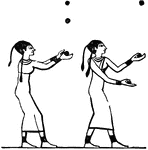
Egyptian Ball Game
"Some of the Egyptian female sports were rather of a hoydenish character, as the game of ball, in one…
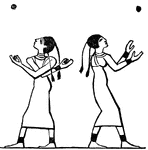
Egyptian Female Ball Game
"Some of the Egyptian female sports were rather of a hoydenish character, as the game of ball, in one…
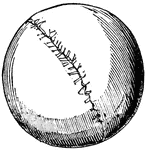
Egyptian Ball
"Some of the Egyptian female sports were rather of a hoydenish character, as the game of ball, in one…
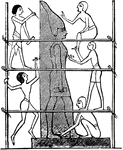
Egyptian Sculptors at Work
"Workmen are represented polishing and painting statues of men, sphinxes, and small figures; and two…

Founding of Argos
"Navigation for the purpose of commerce, and the art of writing, are said to have originated with the…

Crown
A wreath or garland, or any ornament encircling the head, especially as a badge of dignity or power.
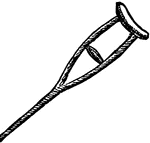
Crutch
A staff with a cross-piece at the head, placed under the arm or shoulder, to support the lame or infirm…
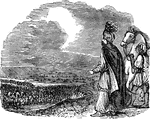
Xerxes surveying his army
"About the year 480 B.C., Xerxes, an Asiatic king, assailed the country with an army of several millions.…
Saber
A sword with a broad and heavy blade, thick at the back, and a little curved toward the point; a cavalry…

Stirrup
A kind of ring, for receiving the foot of a rider, and attached to a strap which is fastened to the…

Cobia
A spanish name for a sergeant&mdashfish. Usually has a uniform shape with a wide flattened head, and…

Palaeotherium magnum
"The Palaeotherium magnum was of the size of a horse, but thicker and more clumsy; its head…
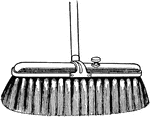
Dustless brush
"A dustless brush. The back of the brush is hollow and is filled with kerosene, which slowly trickles…

Muscles of the Eyes
"The eye is moved about by six muscles. The back ends of these muscles are attached to the eye sockets.…
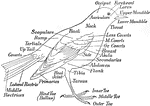
Labeled bird
"When a new bird is seen, the observer should write an accurate description of it in his notebook, giving…






